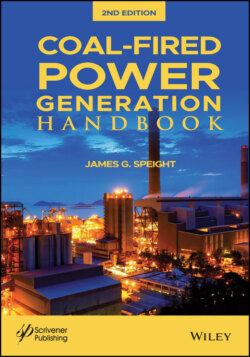Читать книгу Coal-Fired Power Generation Handbook - James Speight G., James G. Speight - Страница 98
4.3.1 Long-Term Storage
ОглавлениеWhen coal is stockpiled in the open and is to remain in storage for long periods of time, such as through a winter or during extended periods of diminished sales, the area(s) selected for storage should be dry and be constructed to permit good drainage. The area must then be made free of all combustible material having low ignition temperatures, such as wood, rags, dry hay, and the like (Allen and Parry, 1954).
Clay or firmly packed earth, upon which fine coal is rolled, should form the base of the storage pile and the coal should be spread over the entire area in thicknesses of approximately 1 to 2 feet and compacted. The formation of conical piles should be avoided and the top and sides of the pile should be compacted or rolled to form a seal and exclude air. An effective seal of a coal pile is afforded by a continuous layer of fine coal followed by a covering of lump coal to prevent loss of the seal through the action of wind and rain.
Larger sizes of screened coal can be stored with little difficulty. Loose storage that allows natural ventilation to dissipate the small amount of heat produced is usually adequate. In addition, seals of compacted fine coal may be employed. This can minimize the undesirable production of fines if the coal has a tendency to slack. Run-of-mine coal and stoker-sized coal should be stored by the layering method, with sides sloped for drainage. Oil treatment of smaller sizes of coal (at ambient temperature or by use of a thermal method) is at times desirable as it slows the absorption of moisture and oxygen (Berkowitz and Speight, 1973).
When heating and fires develop in storage piles and it is impractical to spread out the coal to cool, smothering by compaction with heavy equipment is generally the best procedure since water flooding may wash out voids in the pile, allowing the fire to spread. Heating in storage piles can be detected, before it becomes serious, by driving small- diameter pipes at intervals vertically into the pile and using thermometers or thermocouples to measure the temperature. The pipes should be driven completely through the pile to avoid a chimney effect.
